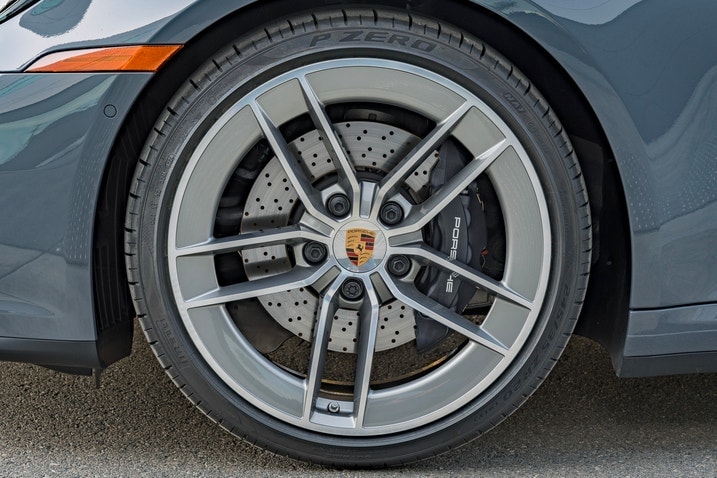A lug nut is a fastener that screws onto threaded wheel studs and secures the wheel to the axle of the vehicle. The number of lug nuts on a standard car depends on its size and weight. In general, small cars, such as a Honda Civic, typically have five lug nuts per wheel, while larger vehicles, such as midsize SUVs and trucks, can have five, six, and up to eight lug nuts per wheel in the case of heavy-duty trucks.
Lug nut basics
Lug nuts are commonly used on steel and aluminum wheels. The end of the lug nut, facing the outside, is typically rounded, flat or tapered. There are also different types of lug nuts for various kinds of cars. The most common type is the acorn or conical seat lug nut with a 60-degree or 45-degree taper that self-centers and fits into the wheel's cone-shaped lug hole.
Some automakers, such as Audi, BMW, Mercedes-Benz and Volkswagen, use lug bolts instead of nuts, which screw into a threaded hole in the wheel's hub or brake disc (or drum).
Can I drive missing one lug nut?
No. Driving with a missing lug nut is unsafe because it can cause the wheel to wobble and vibrate and, in the worst-case scenario, even come off while driving. It can also lead to further damage to the wheel, wheel hub and other components. If you have one missing, avoid driving the car and make sure to replace it immediately.
What is a bolt pattern?
A bolt pattern is the number of lug holes in a wheel and the distance between them represented numerically. For example, a typical five-lug wheel can have variations such as 5x100, 5x114.3 and 5x127. The first number is the number of lugs, and the second is the distance between each lug, often expressed in millimeters (and sometimes converted to inches). You'll need everything to match up evenly on your car to ensure safety and to allow you to switch to a new set of wheels to ensure their compatibility.
How do I figure out my bolt pattern?
Knowing your vehicle's bolt pattern is key for proper wheel fitment. One way to figure it out is by physically measuring the distance between the lug holes on your wheel. You can find useful diagrams online that illustrate how to measure each lug pattern.
Vehicles with an even number of lug nuts: Bolt patterns with an even number of lug nut holes are measured by finding the distance between the center of one hole and the center of the hole directly opposite it.
Vehicles with an odd number of lug nuts: Bolt patterns with an odd number of lug nut holes are measured by finding the distance between the far edge of one hole and the center of the second hole on the opposite end. This method accounts for the imperfect circle found in bolt patterns with an odd number of holes.
Edmunds says
Lug nuts might seem like simple hardware among all the moving parts in your car, but they play a crucial role in keeping your wheels securely attached to your vehicle. They come in different shapes and sizes, so using the correct lug nut ensures your wheel is safely and firmly installed. They're small, but like every part of your car, understanding how they work is essential for safe driving.

